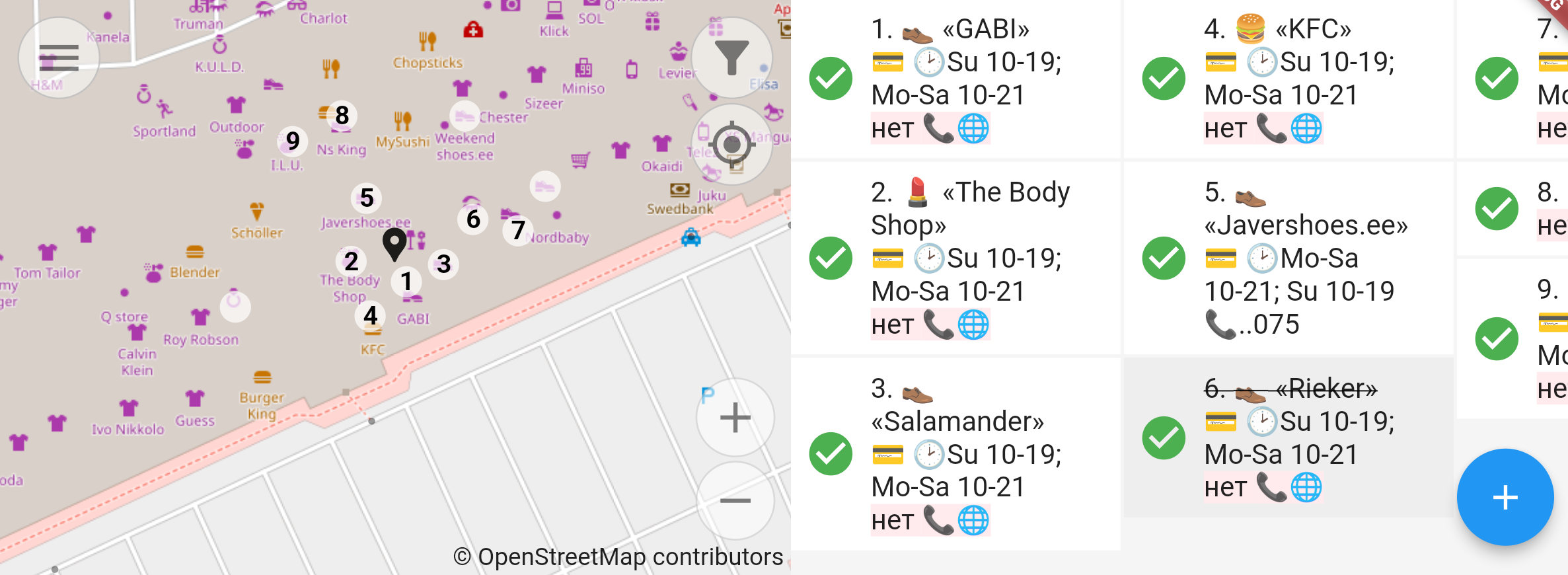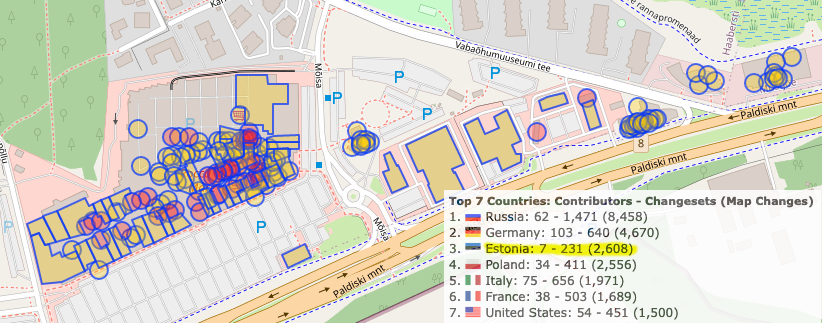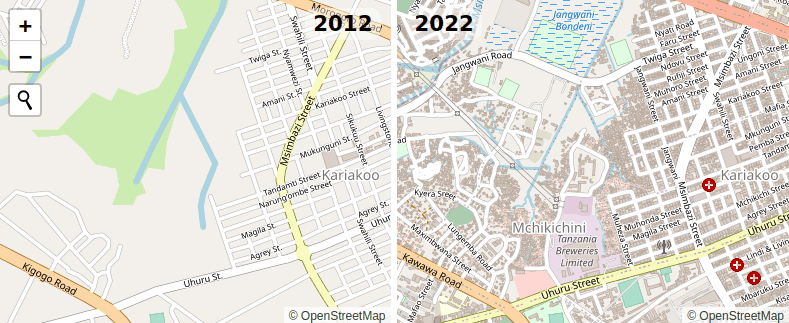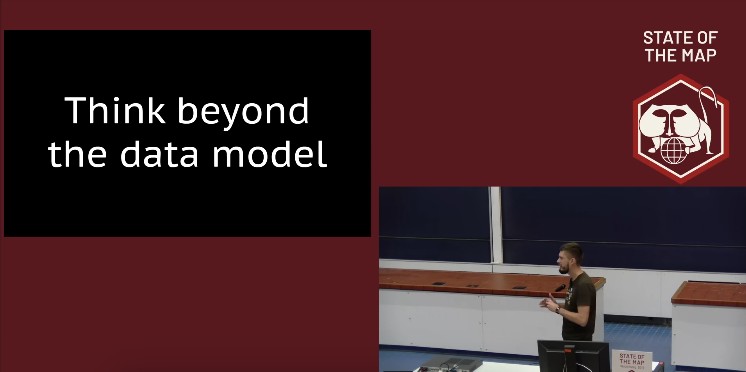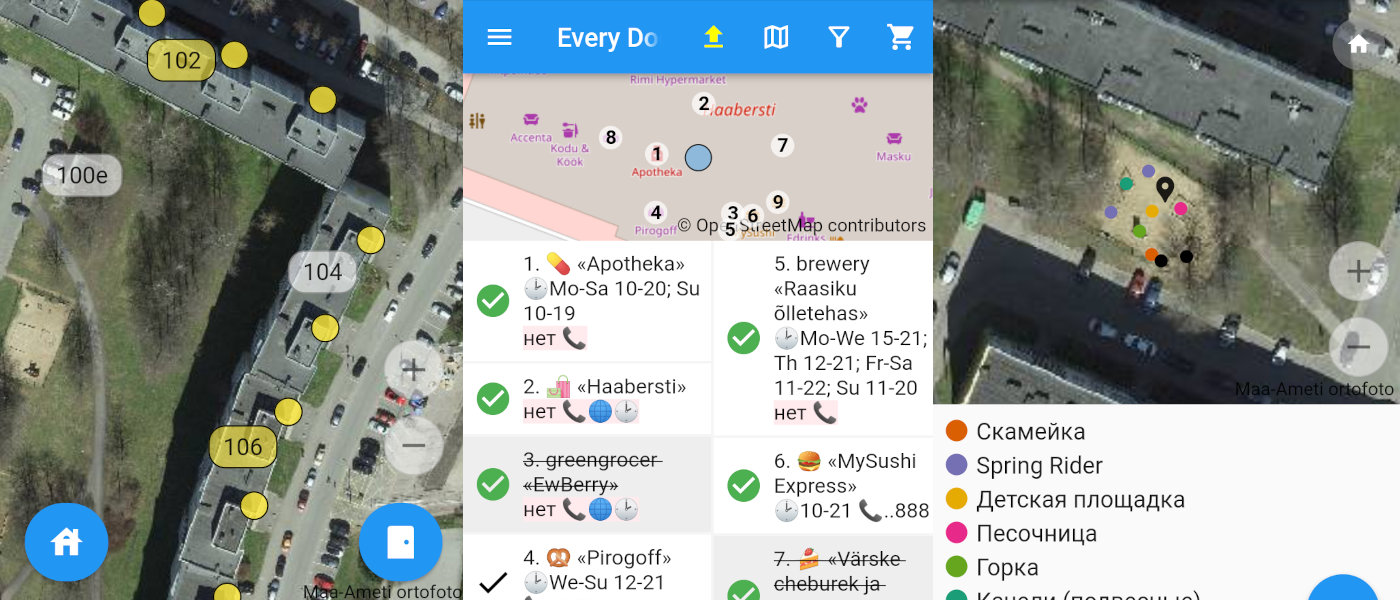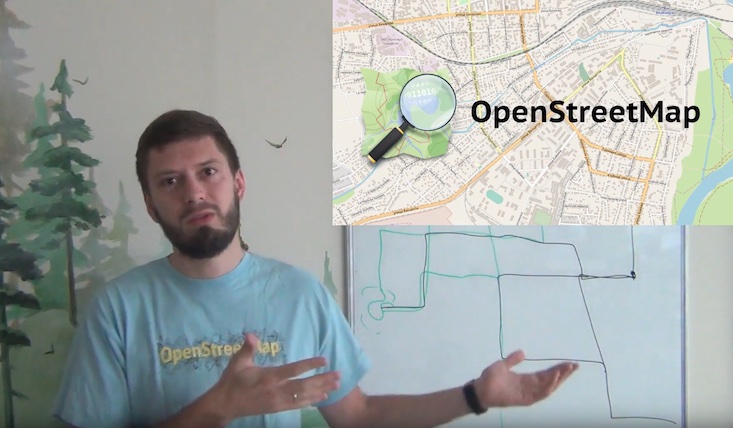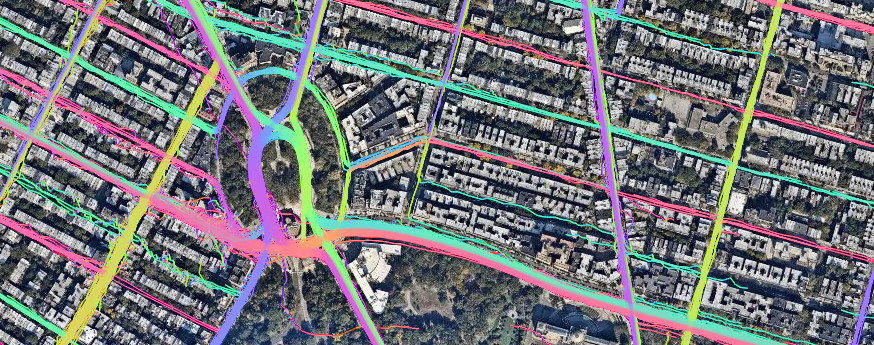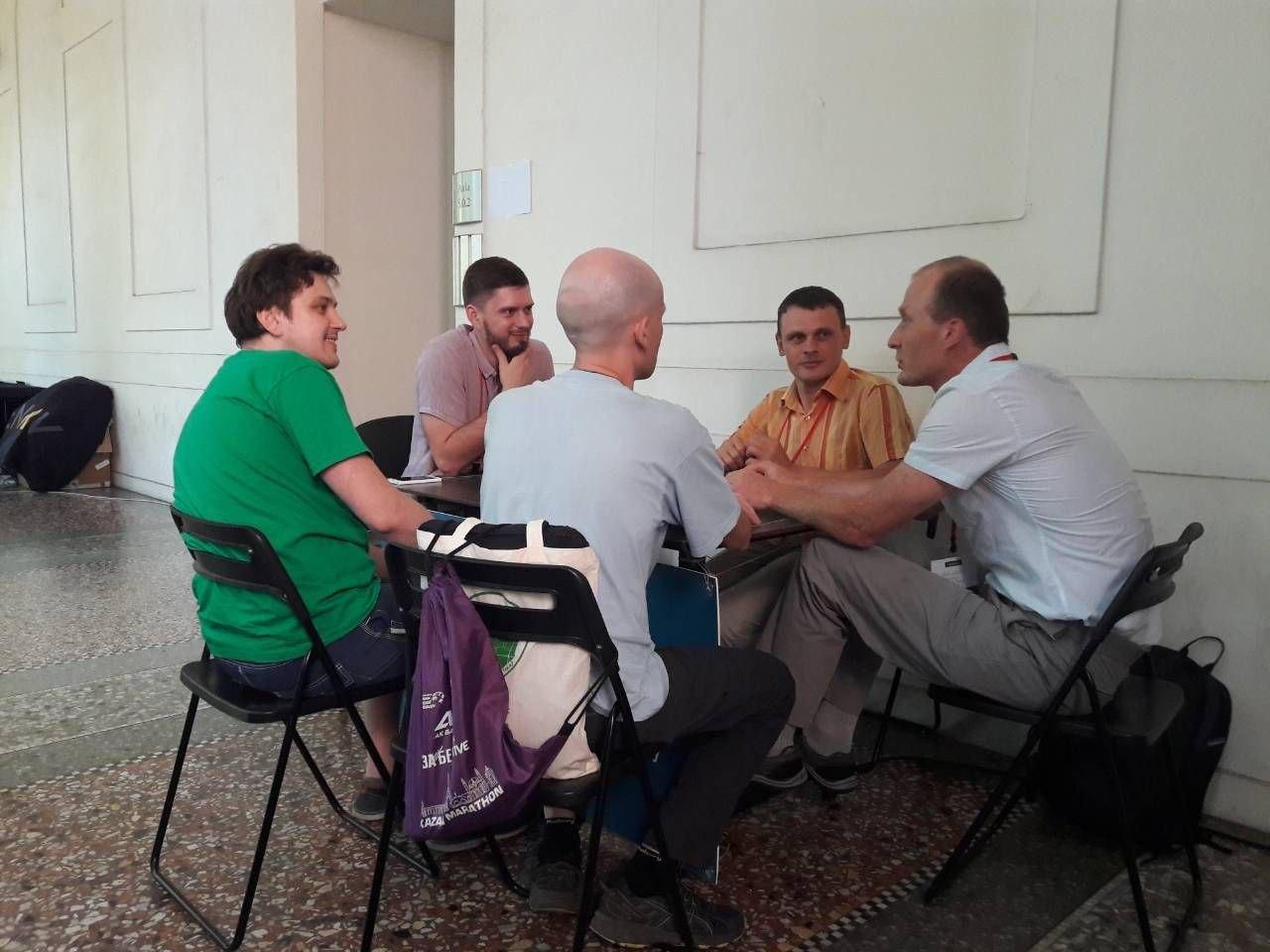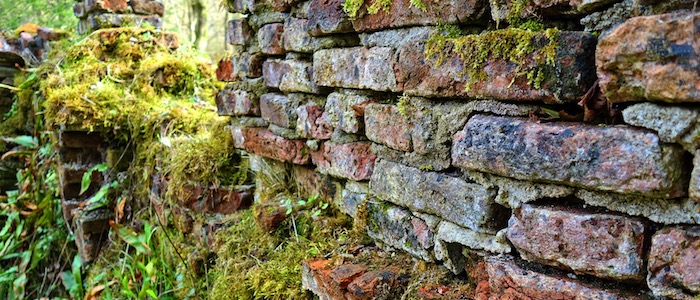So the SotM EU just ended (guys from UK asked to call it “Europe”, not “EU”). We had a lot of talks, hundred people from the States and Belgium, met many friends. And also learned a bit more about Overture Maps. Nothing new since my Shtosm post, but updates my post about donating money. This is a rough DeepL translation of this and this telegram posts.
Marc’s Address
First, a simple one. Overture is not OpenStreetMap. Marc started by saying that the target audience for Overture Maps is developers. Just as Ballmer once chanted: developers, developers! And he’s right: Overture makes working with data much easier for developers. The data is collected, cleaned, in a convenient format, take it and build it into the product.
So the audience is product developers. Who know little about geo, but a lot about building products. As I wrote in the reddit about VLC, there are developers and there are developers. The audience here are opensource developers: god knows how to organize them. They are not the TA of Overture. They’re doing OSM. So when Mark encourages developers to use (and of course improve) Overture here, he’s kind of leading developers away from OSM. And that’s the first thing that was a bit tone deaf in his presentation.
The second is what I detailed in my question after the talk. That is, I’ve written before that Overture is an awesome wrapper to OSM. It sells data, it sells an idea, it does all the things we don’t want to do. But at the same time, the attitude towards Overture and the community was: you’re doing a great job, all these maps are very good, the tools you’ve written are great too, keep it up.
A star for the effort. OSM is some kind of a magic project that miraculously creates very good data from which to build Overture. I mean, I’m not against it, I like the idea. Overture is easy to sell: Esri, TomTom, Meta, Microsoft and others immediately jumped in for a reason. Overture has tons of resources, they have great managers and great developers under their wing. Making a persistent identifier scheme for OSM data is no cat sneeze. They’re amazing and they have everything.
But they still have OpenStreetMap at their base. No matter how nice a deck you build, it’s what keeps the ship from sinking that matters. The hull. And here’s a reasonable question: with all these resources, what does Overture Maps plan to do to support the project at its core?
Nothing? That’s the answer from companies like Amazon, who have successfully forked Mongo, Postgres, Nginx and everything else and are improving those with their excellent engineers. Giving money doesn’t work either, as I previously wrote about in Shtosm. Because we see OSMF now, to quote “Fight Club”, at a very strange time in their lives. It seems like what I want from Overture is to “come in and fix things”. Help not so much with money, but with management, developers. Make the damn guild.
Right now they don’t come to OSM. “You guys are cool, keep it up”. OSMF isn’t going to Overture: “we’re open to communication, call us”. Two projects that will complement each other perfectly, that just need to approach each other. There are more than fifty people here at the conference connected to Overture, and even more from OSM. And they’re not talking! It’s not a technical disagreement, it’s not a legal disagreement, it’s not even attribution, as I explained to everybody yesterday. It’s a banal disconnect, a lack of understanding.
And that’s on Overture. They’re mostly made up of managers. People whose job it is to communicate with people. I don’t expect anything from OSMF, but the “suits” could’ve understood what’s going on here. But all they do is show how awesome their project is. Yeah, it’s awesome. But it’s not the right audience. This audience needs to be approached differently.
It’s a stalemate. I don’t know what to do. It’s a very strange moment for OpenStreetMap as a whole, and nobody’s talking about it.
On Help
What response would I expect from Marc to my question about what Overture Maps can do to help OpenStreetMap, other than thank yous?
It’s clearly not the money: we’ve seen that it doesn’t help. Not developers: as I wrote above, there are slightly different guys working on technology here than in corporations. Hosting conferences, as some of the channel joked? Well, that’s not something worth writing about.
Our project needs managers. We need a CEO. “CEO of OpenStreetMap” – how does that sound, huh? I can feel the heat: you promised to “help and guide”, not “sell and manage”! It’s not like that, that’s not what a manager is about, even at the highest level. Managers lead organizations in terms of tactics and strategy within a mission, just as product maintainers lead code projects. We need someone who can speak corporate.
Someone like Tyler. The former CEO of the Humanitarian Team was awesome. During the seven years with him, the NGO defined its mission, got a huge development grant for it, increased its annual budget 11 times, partnered with just about every other humanitarian organization, and created a network of hubs with over a hundred employees. Everyone knows HOT as an effective organization.
OSMF, on the other hand, can’t even launch microgrants, the most basic form of community incentives. Even less, the “achievement stars” I gave out in the form of OSM Awards ran out as soon as my job burned me out. The Board can’t work with neither the “top” nor the “bottom”, contacted only by people and organizations that don’t know it.
That’s fine: it seems like the Board is high above, but in reality, it’s just seven volunteers with technical backgrounds (mostly - techies have money and time for side work) who have their own jobs and hobbies. They are only expected to spend two or three hours a week on OSMF. It’s not about launching projects or business relations. It’s only about helping and responding. If it weren’t for Michelle and Dorothea, the Foundation would have decayed into nodes and relations a long time ago.
The top level managers make a legal entity out of an amateur batch, with which other organizations can communicate normally and which adequately represents its members. With a predictable budget, a strategy (the Board failed here, twice), behind-the-scenes contacts, an aura of successful success. The developer (a million cartographers in our case) makes the product, and the manager creates its future.
This is exactly what Overture Maps could help with at first. They have enough managers. They know whom to call. We don’t. There’s zero chance of us finding someone like Tyler. There’s no money for a first year CEO salary either. As I wrote above, it’s a stalemate and can only be resolved from the outside. That “outside” could be Overture — thus fixing several misunderstandings at once.
You might say, I’m dreaming. But I’m not the only one. It felt like this thought was circulating all around the conference on Sunday. I heard, even on the OSMF Board people agree on the necessity of management. But they don’t know how to express it, so they just sit and wait for proposals. OpenStreetMap may not have a future yet, but we already know roughly where to look for it.
Some Mastodon
Of course some discussion followed, and I also could not help ranting on a tangential topic, so here are some things from there.
- Ian Dees: “This was a big realization/growth for OpenStreetMap US. Hiring an Executive Director means more can happen and there’s consistent vision. Also, even one person’s full time is way more productive than several people’s volunteer-able time.”
- Brandon Liu asked, why I expect anything else of OSMF, when the status quo is good enough for everybody. To which I replied, “I’d start with “support”. I don’t feel supported when I map, it’s like stackoverflow in there. I don’t feel supported when I develop things, except for people using my apps and thanking me in person. I don’t feel supported when I document or propose things on wiki and around.”
- And: “Currently there isn’t any form of support, but a degree of opposition to anything. It takes a certain frame of mind to participate in OSM, especially in Europe.”
- The rant was about how OSM has been constantly losing best developers to corporations, and this continues on and on, because OpenStreetMap at its core is mappers, and only mappers matter.
- I pointed out that corporations push their resources into OSM QA: see daylight distribution, for example. And that’s weird: “imagine a company creating a validation toolchain for Wikipedia. How and why and what for? For OSM, these questions have clear and immediate answers.”
- And finally, “Actually I’ve just looked at OSMF mission statement and could not even find “support the community” line, just the servers. So that would be the change. For OSMF to start supporting OSM.”

